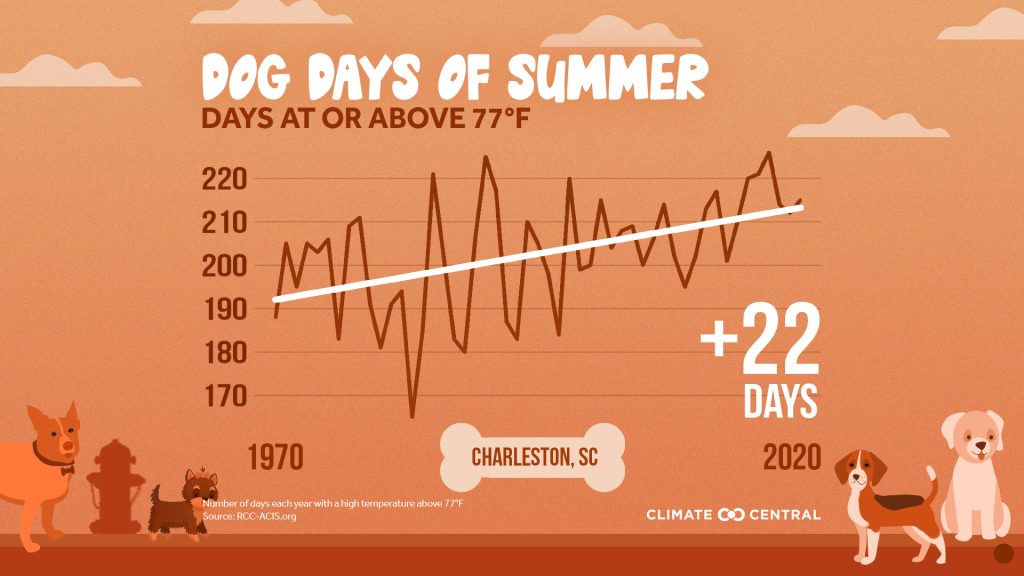The Relationship between Thermal Stress and Pet Health in Hot Climates

Understanding Thermal Stress in Pets
As temperatures soar in the hot climates of countries like Nigeria, the health of our beloved pets hangs in the balance. Thermal stress affects not only the comfort of animals but also their overall well-being. Recognizing the signs and implications of this stress is essential for pet owners. With the dry season often bringing sweltering heat and high humidity levels, understanding how to protect our pets becomes a matter of urgency.
Increased temperatures can lead to a variety of health issues in pets, including:
- Heat Stroke: A dangerous condition that arises when a pet overheats, often characterized by excessive panting, drooling, and lethargy. In severe cases, heat stroke can lead to organ failure and even death. It is crucial for pet owners to know that animals can suffer from heat stroke at temperatures as low as 75°F (around 24°C).
- Dehydration: Pets may not drink enough water during hot weather, leading to severe health risks. Signs of dehydration include dry gums, drinking excessively once given water, and loss of skin elasticity. Providing constant access to fresh, cool water is vital.
- Behavioral Changes: Pets may become lethargic or aggressive due to discomfort brought on by heat. A normally playful puppy may refuse to engage in play, while a gentle pet might snap when touched, signaling distress and discomfort.
Various factors contribute to the thermal stress experienced by pets in these climates. These include:
- Humidity Levels: High humidity can exacerbate heat stress. In Nigeria, the coastal regions often experience high levels of humidity during the wet season, making it even harder for pets to cool down.
- Breed Characteristics: Some breeds, especially those with thick fur, such as Golden Retrievers and Bulldogs, are more susceptible to the effects of heat. They struggle to regulate their body temperature effectively, making proper care and attention essential during hot weather.
- Living Conditions: Pets without access to shade or water are at higher risk. In urban parts of Nigeria, where concrete and asphalt absorb and radiate heat, ensuring that pets have a cool, shaded area to rest is critical for their health.
Understanding the relationship between thermal stress and pet health is crucial for ensuring they live comfortably and healthily. Pet owners should monitor the weather conditions closely, especially during heatwaves, and adjust their pets’ outdoor activities accordingly. Simple measures, such as walking pets during the cooler parts of the day, providing cooling mats, and ensuring proper hydration, can significantly reduce the risks associated with intense heat.
With these precautions in place, pet owners can shield their furry friends from the harshness of the heat, enabling them to thrive even in the toughest conditions. Ultimately, a vigilant pet owner is a pet’s best defense in the face of thermal stress.

CHECK OUT: Click here to explore more
Impacts of Thermal Stress on Pet Health
In hot climates like Nigeria, where the sun blazes relentlessly, pets are particularly vulnerable to thermal stress. This stress not only alters their physical health but can also affect their psychological well-being. Understanding the impacts of thermal stress on pets is crucial for safeguarding their health, especially during the peak heat months. Numerous studies reveal alarming trends regarding pet morbidity linked to excessive heat exposure.
The physiological responses of pets to high temperatures can be concerning. When pets are faced with thermal stress, their bodies attempt to cool down primarily through panting and increased heart rates. However, these natural cooling mechanisms can quickly become overwhelmed during extreme heat spells. Here are several significant health concerns tied to thermal stress in pets:
- Heat Exhaustion: This condition is a precursor to more severe heat-related illnesses. Pets experiencing heat exhaustion may show signs of heavy panting, drooling, weakness, and confusion. If owners notice these symptoms, it is vital to move the animal to a cooler area immediately.
- Cardiovascular Issues: Prolonged exposure to high temperatures can exacerbate existing heart conditions. In breeds predisposed to cardiac problems, excessive heat can lead to a severe decline in health, making regular veterinary check-ups essential when the temperatures rise.
- Skin Problems: Hot and humid conditions can also lead to skin irritations and infections. Pets may scratch or bite at their skin due to irritation, resulting in further complications such as dermatitis or hot spots. Maintaining proper grooming practices becomes imperative to mitigate these risks.
Moreover, thermal stress has profound implications for pet behavior. As the temperature rises, many pets exhibit signs of anxiety and agitation, which can affect their overall temperament. For example, a social dog may become withdrawn and reluctant to engage with family members, while a more anxious breed could express their discomfort through destructive behaviors. This shift in behavior can create added stress for both the animals and their owners.
Recognizing the symptoms and tackling the root of thermal stress are vital components of pet care in Nigeria’s hot climate. As temperatures rise, it’s essential for pet owners to be on high alert for signs of distress and to implement preventative strategies. Considerations such as creating shaded outdoor areas, frequent hydration breaks, and even planning activities according to lower temperature times can dramatically improve the quality of life for our pets.
By cultivating an understanding of how thermal stress impacts pet health, owners can take proactive measures to enhance their pets’ comfort and well-being. This knowledge not only benefits pets but can also strengthen the bond between pets and their caregivers, fostering a healthier, happier environment for all.
The Relationship between Thermal Stress and Pet Health in Hot Climates
As pet owners, understanding the impact of thermal stress on our furry friends is crucial, especially in hot climates where the risks can be heightened. The consequences of prolonged exposure to high temperatures can lead to a range of health issues for pets. Indeed, recognizing the signs of heat stress is vital in maintaining your pet’s well-being. Common symptoms may include excessive panting, drooling, lethargy, and even vomiting.
Moreover, certain breeds are more susceptible to thermal stress. For instance, brachycephalic breeds like Bulldogs and Pugs are particularly vulnerable due to their short noses, which can make breathing more challenging in the heat. In contrast, larger breeds might experience joint discomfort that can be exacerbated by higher temperatures, leading to a decrease in mobility and overall health.
In addition to direct effects, it’s essential to consider how heat can influence behavioral changes. Pets may become more irritable or anxious as they struggle to cope with the uncomfortable heat, requiring the owner to be more attentive and proactive in managing their pet’s environment. Providing shade, ensuring access to fresh water, and reducing exercise during peak heat hours are practical steps to mitigate risks.
It is also interesting to note that pets can suffer from heat-related illnesses that mirror those in humans. Just like people can experience heat exhaustion or heat stroke, pets face similar dangers. Therefore, always being vigilant and integrating a heat management strategy into your pet care routine is an essential responsibility of all pet owners.
| Category | Details |
|---|---|
| Heat Stress Symptoms | Excessive panting, drooling, and lethargy are key indicators. |
| Affected Breeds | Brachycephalic breeds like Bulldogs and Pugs face greater risks. |
| Heat-Related Illnesses | Pets can suffer from conditions similar to humans, including heat stroke. |
By being informed about these factors related to thermal stress and taking proactive measures, we can enhance the health and quality of life for our pets in scorching climates. Ensuring that our pets are comfortable and safe is not just a priority; it’s a commitment every pet owner should embrace wholeheartedly.
LEARN MORE: This related article may interest you
Preventive Measures Against Thermal Stress
Given the severe consequences of thermal stress on pet health, it becomes imperative for pet owners in hot climates such as Nigeria to adopt preventive measures. While pets may be resilient, their comfort can significantly deteriorate when exposed to harsh environmental conditions. Thus, mitigation strategies are essential for preserving their health and ensuring a favorable living environment.
A primary step is ensuring that pets are provided with ample shade and ventilation in outdoor spaces. Simple structures such as shelters or shade tarps can offer relief from the unrelenting sun. Furthermore, setting up fans or utilizing air conditioning whenever possible can markedly improve indoor conditions for pets. This is particularly crucial during the hottest parts of the day when the temperatures peak, often surpassing safe thresholds for many animals.
- Hydration: Keeping pets hydrated is vital. Fresh, cool water should always be available, especially during prolonged outdoor activities. Pet owners should also consider using specialized pet water containers that help keep the water cooler for extended periods.
- Morning and Evening Walks: Altering walking schedules to early mornings or late evenings, when temperatures are cooler, can reduce the risk of overheating. This adjustment not only benefits the pet’s physical health but also keeps the owner comfortable during walks.
- Regular Grooming: For pets with thick fur, regular grooming is essential. Short haircuts during peak hot seasons can help pets manage their body temperature better, reducing the risk of overheating. Additionally, owners should check for any signs of skin irritations, which can be exacerbated by heat.
Moreover, understanding which breeds are more susceptible to heat stress is crucial. Breeds such as bulldogs, pugs, and other brachycephalic dogs possess compromised respiratory systems that hinder effective cooling during periods of thermal stress. Owners of such breeds should exercise extra caution, keeping their pets indoors during peak heat and securing regular veterinary assessments to monitor their health.
Behavioral adaptations also play a significant role in maintaining pet health under thermal stress. Providing pets with engaging indoor activities, such as interactive toys or puzzle feeders, can prevent boredom and help alleviate anxiety often induced by heat stress. Furthermore, recognizing when pets are seeking cooler areas, like tiled floors or bathrooms, can help owners assertively create a pet-friendly environment.
Finally, education and awareness are powerful tools for preventing thermal stress. By engaging with local pet communities, spreading knowledge on the implications of high temperatures on pet health, and sharing tips via social media platforms, owners can foster a culture of proactive pet care in their neighborhoods. Initiatives such as neighborhood pet walks during cooler periods can also be organized, allowing for socialization while adhering to temperature precautions.
By implementing these practical measures, pet owners can significantly reduce the incidence of thermal stress in their animals, enhancing overall pet well-being. This proactive mindset not only protects the pets but also promotes community-wide awareness about the importance of caring for pets in the scorching heat of Niger’s climate.
LEARN MORE: This related article may interest you
Conclusion
In summary, the intricate relationship between thermal stress and pet health in hot climates, particularly in regions like Nigeria, underscores the need for vigilant care and preventive measures. As temperatures soar, pets become vulnerable to a myriad of health issues, from heat exhaustion to more severe conditions that can jeopardize their well-being and quality of life. Therefore, understanding and addressing the specific needs of pets during extreme heat is paramount.
By implementing practical strategies such as ensuring adequate hydration, providing necessary shade, and adapting exercise routines, pet owners can significantly diminish the risk of thermal stress. Additionally, it is essential to remain informed about the unique susceptibility of various breeds and to continually assess the comfort and health of our furry companions. Moreover, engaging with local pet communities can create a network of support and knowledge-sharing that enhances collective awareness and promotes responsible pet ownership.
Ultimately, recognizing the impact of rising temperatures not only improves individual pet health but also nurtures a culture of empathy and proactive pet care within communities. As climate change continues to influence our environment, embracing these measures will become increasingly vital. For the sake of our beloved pets, let us champion their well-being in the face of thermal adversity, ensuring that their lives are not only sustained but thrived under the scorching sun.


